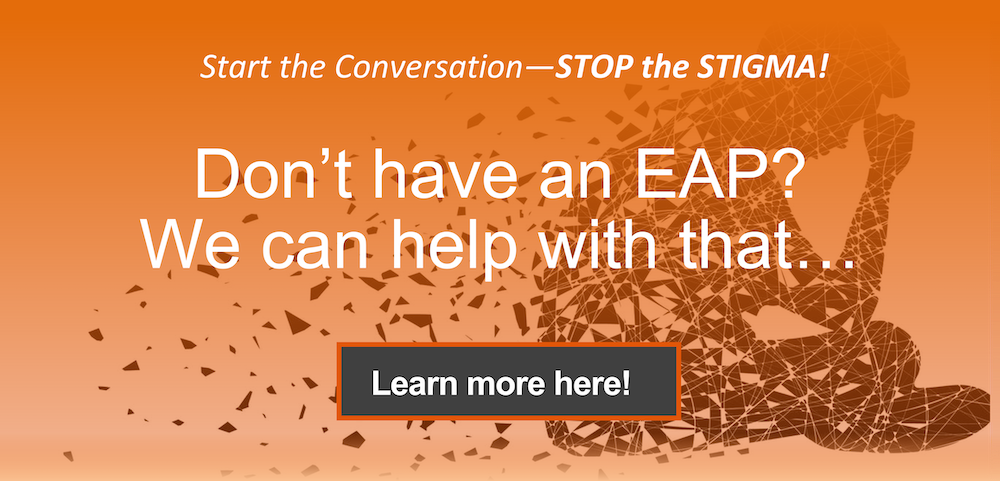Suicide is one of the leading causes of death in the United States, and its effects reach far beyond families and friends. Most of the people who die by suicide are employed at the time of their death, which means the workplace is often directly touched by these tragedies.
When a coworker dies by suicide, colleagues are left with shock and grief that can linger long after the loss. Employers face disrupted teams, lowered morale, and the painful realization that warning signs may have gone unnoticed. Yet despite its close connection to working life, suicide is still too often viewed as a private matter rather than an organizational concern.
Making suicide prevention part of workplace culture changes that reality. It acknowledges the responsibility employers share in creating safe, supportive environments and offers a chance to save lives while strengthening the health of the organization as a whole.
The Business Case for Prevention
The human toll of suicide is immeasurable, but the organizational costs are also significant.
Suicide is estimated to cost the U.S. economy over $500 billion annually in medical expenses and lost productivity. For organizations, that translates into disruptions that are both immediate and long-term:
- Absenteeism and presenteeism - When employees struggle with mental health, they may miss work more often or show up but be unable to perform at their usual level.
- Turnover - A workplace perceived as unsupportive can push employees away, driving up recruitment and training costs.
- Lower morale and trust - The loss of a coworker to suicide leaves deep emotional wounds. Without effective postvention (coordinated steps taken to support employees, address grief, and reduce the risk of further crises), organizations risk declines in engagement and overall culture.
- Liability risks - Employers who fail to address mental health and suicide prevention may face reputational harm and even legal challenges if reasonable support measures are absent.
By contrast, proactive prevention measures can strengthen both employee well-being and organizational health. These include:
- Leadership commitment. Visible support from executives signals that suicide prevention is a priority, not just an HR program.
- Manager and supervisor training. Equipping leaders to recognize warning signs and respond appropriately builds confidence and reduces the likelihood of crisis escalation.
- Promotion of Employee Assistance Programs (EAPs).
Actively promoting EAP services (and sharing real examples of how they help) encourages earlier interventions and reduces stigma. - Peer support programs. Colleagues are often the first to notice changes in behavior. Peer-to-peer initiatives create safe pathways for conversations before a crisis escalates.
- Integration into safety culture. Treating mental health and suicide prevention as part of overall workplace safety, not as a separate issue, normalizes the conversation and makes support more accessible.
- Clear crisis response plans. Organizations that prepare for emergencies by knowing how to respond if an employee expresses suicidal intent or if a suicide occurs reduce confusion and ensure compassionate, coordinated care.
When employees believe their well-being is valued, they are more likely to stay, contribute fully, and recommend the organization to others. Prevention is not only a moral responsibility but also a sound business strategy that builds resilience across teams.
Understanding the Risks
Suicide does not happen in isolation. While every situation is complex, workplace conditions can play a role in either increasing or reducing risk. Recognizing these challenges is the first step toward prevention.
3 major contributors
1. Job-related stress and high-risk professions
Some industries carry higher suicide rates than others. Research from the CDC found that construction, extraction, and transportation workers are among those at greatest risk. Physically demanding work, irregular schedules, financial pressure, and chronic exposure to hazards all contribute to heightened stress.
But high risk isn’t confined to physical jobs. Professions such as healthcare, first response, and law enforcement also show elevated rates. These roles combine long hours, high emotional demands, and frequent exposure to trauma, which can erode resilience over time. When stress accumulates without adequate outlets for support, the danger of crisis increases.
2. organizational culture and isolation
Work environments that reward overwork or ignore mental health concerns can inadvertently make employees more vulnerable. Lack of flexibility, poor communication, and minimal psychological safety leave people feeling disconnected or disposable. Remote and hybrid work models, while beneficial in many ways, can also increase isolation if organizations do not intentionally maintain connection and support.
3. stigma and silence
Even when resources exist, stigma remains a powerful barrier. Employees may fear that speaking up about suicidal thoughts will lead to job loss, damaged reputations, or strained relationships at work. As a result, warning signs often go unnoticed or unspoken. The culture of silence means many people suffer alone, and opportunities for timely intervention are missed.
A survey by the National Association of Mental Illness found that just 57% of workers would feel comfortable talking with their manager about mental health issues, highlighting how stigma undercuts even well-designed support programs. Until workplaces normalize open conversations, many employees will continue to struggle in silence.
What Prevention Looks Like at Work
Effective workplace suicide prevention operates on multiple levels, creating overlapping layers of support that catch people before they reach crisis. The most successful programs combine universal prevention efforts that benefit all employees with targeted interventions for those showing signs of distress.
creating early warning systems
Prevention begins with making it easier to spot when someone is struggling. This means training supervisors to recognize not just dramatic warning signs, but subtle changes: a usually punctual employee who starts arriving late, someone who withdraws from team conversations, or a high performer whose work quality suddenly declines.
The key is teaching managers to respond with care rather than discipline. When supervisors approach these conversations with curiosity rather than judgment, they create openings for employees to share what's really happening. This approach requires ongoing training, not just one-time workshops, because recognizing distress is a skill that develops with practice.
Strengthening Support Networks
While formal resources like Employee Assistance Programs are essential, peer connections often provide the most immediate support. Organizations are increasingly training volunteer "mental health champions," employees who receive basic skills in active listening and crisis recognition, and who can serve as informal bridges to professional help.
These peer networks work because they leverage existing relationships and reduce barriers to seeking help. When a trusted colleague suggests calling the EAP or offers to accompany someone to a counseling appointment, it feels less intimidating than formal referrals from HR or management.
Reducing Structural risks
Equally important is addressing the structural factors that contribute to isolation. This might mean redesigning work processes to encourage collaboration, creating intentional opportunities for connection in remote work settings, or ensuring that high-pressure periods include built-in recovery time.
Employers who take these steps recognize that prevention is not just about responding to warning signs but also about reducing the conditions that allow risk to build unnoticed. Organizational design choices like scheduling, workload expectations, and opportunities for connection directly influence whether employees feel supported or alone in times of stress.
Making resources accessible and relevent
Having mental health benefits isn't enough if employees don't know how to use them or don't believe they're worth the effort. Successful organizations actively promote their resources through multiple channels: supervisor conversations, peer testimonials, and clear communication about confidentiality protections.
The most effective EAP promotions go beyond listing services to share real examples of how they help. Instead of saying "counseling is available," effective messaging might explain: "Our EAP includes financial counseling that helped 200 employees last year navigate debt stress, and grief counseling that supported teams through difficult losses."
Organizations also benefit from expanding beyond traditional mental health services to address root causes of distress. This might include financial wellness programs, flexible scheduling to reduce work-life conflict, or ergonomic improvements that reduce physical stress.
Strengthening Prevention Efforts
Whether an organization is just beginning to address suicide prevention or looking to enhance existing programs, certain elements consistently drive success. The most effective approaches are those that integrate prevention seamlessly into how the organization already operates.
leadership as a foundation
Prevention efforts succeed or fail based on leadership commitment, but this goes beyond policy statements. Leaders need to model the behavior they want to see by talking openly about mental health challenges, using available resources themselves, and making decisions that prioritize employee wellbeing even when it requires short-term trade-offs.
This means senior executives discussing their own experiences with stress or therapy, managers who encourage employees to use mental health days without guilt, and organizational decisions that consider psychological impact alongside financial implications. When employees see leaders treating mental health as seriously as physical safety, they're more likely to believe that seeking help won't harm their careers.
building on existing strengths
Rather than creating entirely new programs, successful organizations often expand what they're already doing well. Companies with strong safety cultures extend those same principles to psychological wellbeing. Organizations known for excellent training add mental health components to existing development programs. Those with robust communication systems use established channels to normalize conversations about mental health.
The key is identifying where mental health awareness fits naturally within existing organizational priorities and processes. This approach reduces resistance, leverages familiar systems, and signals that prevention isn't an add-on but an integral part of how the organization operates.
measuring what matters
Effective prevention requires ongoing evaluation, but traditional metrics don't always capture the full picture. While tracking EAP utilization rates and employee satisfaction scores provides useful data, organizations also need to look at leading indicators: Are managers having more frequent check-ins with their teams? Do employees report feeling comfortable discussing stress at work? Are there fewer complaints about workplace culture issues that contribute to distress?
Regular pulse surveys, focus groups, and exit interview data can reveal whether prevention efforts are actually changing workplace dynamics. The goal isn't perfect scores but steady progress toward a culture where employees feel supported and connected.
Looking Ahead
Workplace suicide prevention is ultimately about creating environments where people feel valued, connected, and safe enough to reach for help. Organizations that take this responsibility seriously are not only protecting lives, they are shaping workplaces where health, trust, and compassion become part of everyday operations.
When you partner with Ulliance, our Life Advisor Consultants are always just a phone call away to teach ways to enhance your work/life balance and increase your happiness. The Ulliance Life Advisor Employee Assistance Program can help employees and employers come closer to a state of total well-being.
Investing in the right EAP or Wellness Program to support your employees will help them and help you. Visit https://ulliance.com/ or call 866-648-8326.
The Ulliance Employee Assistance Program can address the
following issues:
• Stress about work or job performance
• Crisis in the workplace
• Conflict resolution at work or in one’s personal life
• Marital or relationship problems
• Child or elder care concerns
• Financial worries
• Mental health problems
• Alcohol/substance abuse
• Grief
• Interpersonal conflicts
• AND MORE!
References:
Suicide Awareness in the Workplace; American Psychiatric Association Foundation Center for Workplace Mental Healthhttps://workplacementalhealth.org/news-events/news-and-blog/suicide-awareness-in-the-workplace
Suicide Prevention & Response: New Tools Help Employers Take Action; American Psychiatric Association Foundation Center for Workplace Mental Health
https://workplacementalhealth.org/mental-health-topics/suicide-prevention
Suicide Statistics; American Foundation for Suicide Prevention
https://afsp.org/suicide-statistics/
Workplace Help May Be Key to Preventing Suicide; Society for Human Resource Management (SHRM)
https://www.shrm.org/topics-tools/news/inclusion-diversity/workplace-help-may-key-to-preventing-suicide



.jpg?width=600&height=338&name=2Google%20Review%20NEW%20w%20click%20here%20button%20(1).jpg)
